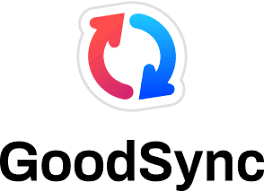Insomnia Core 2023.2.2 Full Free Version
Insomnia Core a widespread sleep disorder, has long plagued millions worldwide. However, recent scientific advancements have highlighted the “Insomnia Core.” This blog will explore Insomnia Core and how it can revolutionize our understanding of Insomnia.

The Insomnia is a sleep disorder characterized by difficulty falling asleep, staying asleep, or experiencing non-restorative sleep. While various factors contribute to Insomnia, such as stress, anxiety, or medical conditions, the concept of Insomnia Core delves deeper into its underlying causes.
Insomnia Core represents a fundamental disturbance in the brain’s sleep regulatory mechanisms, affecting the body’s ability to initiate and maintain sleep. This disruption goes beyond insomnia symptoms, providing insight into the complex neurobiological processes.
Insomnia Core Explained (100 words): Insomnia Core involves dysfunctions in key brain regions responsible for sleep regulation, including the prefrontal cortex, thalamus, and limbic system. These areas interact and coordinate to modulate the sleep-wake cycle. Studies have shown that individuals with Insomnia Core exhibit altered brain activity patterns during sleep and wakefulness, leading to an impaired ability to transition between these states. Furthermore, neurochemical imbalances, such as decreased gamma-aminobutyric acid (GABA) levels, contribute to hyperarousal and disrupted sleep architecture. Understanding Insomnia Core may pave the way for more targeted treatments and interventions tailored to the underlying neurobiology of Insomnia.
Implications and Future Directions (50 words): By unraveling the mysteries of Insomnia Core, researchers aim to develop novel therapeutic approaches that address the root causes of Insomnia. Personalized treatment strategies targeting specific brain circuits and neurochemical imbalances hold promise for more effective interventions. Furthermore, advancements in neuroimaging techniques and sleep monitoring technologies will continue to enhance our understanding of Insomnia Core and refine diagnostic methods.
- Conclusion (50 words): Insomnia Core offers a paradigm shift in our comprehension of Insomnia, going beyond surface-level symptoms and exploring the fundamental disruptions in brain function underlying the disorder. This new concept provides hope for improved treatments, ultimately aiming to alleviate the burden of Insomnia and restore restful sleep to those affected.
Top Key Feature:
- Sleep Tracking: Insomnia Core offers advanced sleep tracking capabilities, allowing users to monitor and analyze their sleep patterns and quality. It provides detailed insights into sleep duration, stages, and disruptions, helping users better understand their sleep habits.
- Personalized Recommendations: Insomnia Core utilizes the collected sleep data to provide customized recommendations for improving sleep. It offers tailored suggestions on sleep hygiene practices, relaxation techniques, and lifestyle adjustments to enhance sleep quality and duration.
- Intelligent Alarm System: The innovative alarm feature in Insomnia Core wakes users up at the optimal time within their sleep cycle, ensuring a more refreshing and energizing wake-up experience. Analyzing sleep patterns determines the ideal moment to wake users up, reducing grogginess and morning fatigue.
- Relaxation Techniques: It includes a range of relaxation techniques to help users unwind and prepare for sleep. These techniques include guided meditations, breathing exercises, soothing sounds, or bedtime stories, providing a calming environment conducive to better sleep.
- Integration and Connectivity: It integrates with other smart devices and platforms, allowing users to sync their sleep data across multiple devices and access it from anywhere. It may also have compatibility with voice assistants, enabling hands-free control and easy integration into users’ daily routines.
Pros And Cons Of Insomnia Core
Pros of “Insomnia Core”:
- Enhanced sleep tracking:It provides detailed insights into your sleep patterns, including duration, quality, and disturbances, helping you understand your sleep habits better.
- Sleep optimization: The app offers personalized recommendations and strategies to improve your sleep based on the data it collects, assisting you in achieving more restful and rejuvenating sleep.
- Smart alarms:It wakes you during your lightest sleep phase, ensuring you feel refreshed and energized in the morning instead of groggy.
- Relaxation techniques: The app includes various relaxation exercises, such as guided meditation and deep breathing, to
- Sleep environment suggestions:It recommends creating a conducive sleep environment, such as adjusting room temperature, reducing noise, or using aromatherapy, to promote better sleep.
Cons of “Insomnia Core”:
- Reliance on technology: Using an app for sleep tracking means relying on technology, which may be better for individuals who prefer a more analog approach to addressing their sleep issues.
- Inaccuracies: Sleep tracking apps are only sometimes 100% accurate in capturing sleep data, as they rely on motion sensors and algorithms. There can be instances of misinterpretation or incorrect readings, affecting the reliability of the data provided.
- Battery drain: Running a sleep-tracking app throughout the night can consume significant battery life on your mobile device. It may be inconvenient for individuals with limited battery capacity or those who prefer to keep their devices from being plugged in overnight.
- Limited effectiveness for severe insomnia: While can offer helpful insights and recommendations, it may not be sufficient to address severe insomnia cases requiring professional intervention or medical treatment.
- User commitment and discipline: Achieving consistent improvements in sleep quality with Insomnia Core requires commitment and discipline from the user. Following the app’s recommendations and implementing lifestyle changes can be challenging for some individuals.

How To Install?
- Visit the Insomnia website and navigate to the “Downloads” page.
- Choose the appropriate version for your operating system (Windows, macOS, or Linux).
- Click on the download link to start the download process.
- Once the download is complete, locate the downloaded file on your computer.
- For Windows: Double-click on the downloaded file (usually a .exe file) and follow the on-screen instructions to install .
- For macOS: Double-click on the downloaded file (usually a .dmg file) to mount the disk image. Then, drag and drop the application into your “Applications” folder.
- For Linux: Open your terminal and navigate to Run the appropriate command to install the package. This can vary depending on the Linux distribution you are using. Refer to the documentation for specific instructions.
- Once the installation is complete, you can launch from your applications or the command line.
Credit Link






